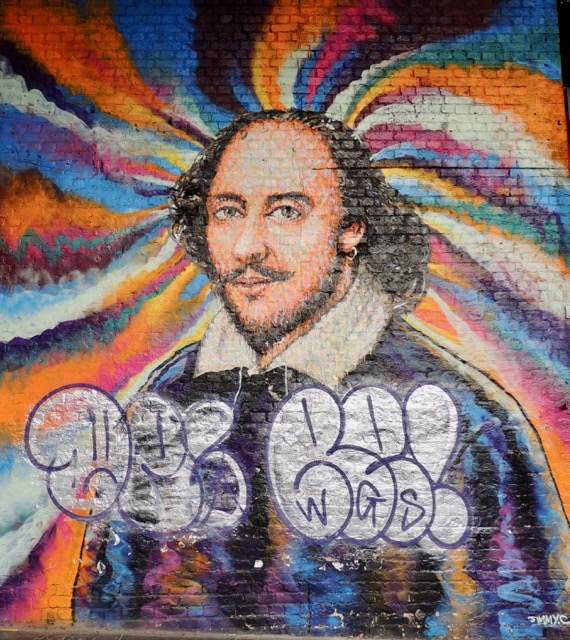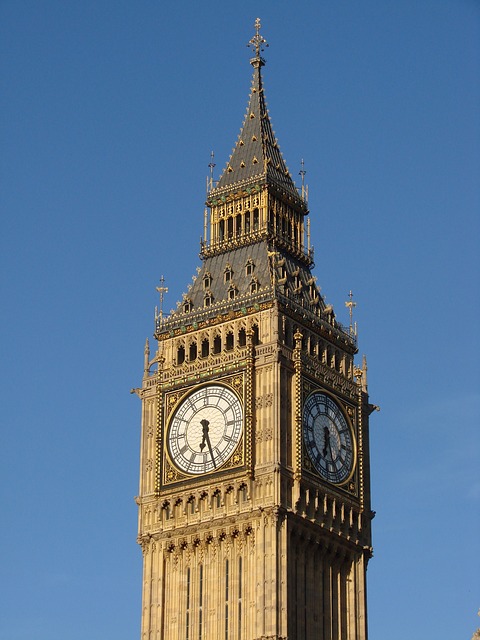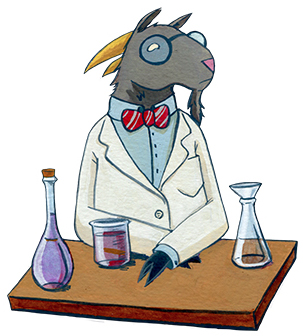Difference between revisions of "London Street Art"
From Londonhua WIKI
| Line 53: | Line 53: | ||
<br><br> | <br><br> | ||
==Styles== | ==Styles== | ||
| − | While it is not easy to classify every piece of street art, these are some styles that encompass a lot of them. | + | While it is not easy to classify every piece of street art, these are some styles that encompass a lot of them. |
| + | ===Suprematists=== | ||
| + | This style is when an artists takes the surface and decorative patterns into heavy consideration when choosing what to paint. It includes the use of angular forms, and straight lines, as well as placing primary and bold colors next to each other. | ||
| + | <br> | ||
| + | ===Site Specific Art=== | ||
| + | This art is made for the environment it is existing in. Every piece of art has a story, and the location has a story, when you put the two stories together, you get a whole new story. It uses the site to enhance the artwork. | ||
| + | <br> | ||
| + | ===Sci-Fi Expressivism=== | ||
| + | It uses bold lines, making the image appear both retro and futuristic. The images painted are usually referencing the outside world, and use organic forms that describe nature or strange creatures. | ||
| + | <br> | ||
| + | ===Retro Pop=== | ||
| + | This style often uses bold outlines, graphics, and logos. Many times the meaning behind the work can have a dark reference. | ||
| + | <br> | ||
| + | ===Super Pop=== | ||
| + | When people describe super pop, it is known as slick, sharp and ultramodern. The references many times have to do with computer games, including virtual reality and the digital age. There can be repeated patters that use bright colors, and it tends to give simple shapes basic human features. | ||
| + | <br> | ||
| + | === Painters' Paint=== | ||
| + | When looking at these pieces of art it looks like there was a very strong emotional application of the paint, because of the abundance of drips, and colors bleed into one another. They use very large color field, and the pieces of work can look degraded or corroded even when they are first made. | ||
| + | <br> | ||
| + | ===Recyclomaniancs=== | ||
| + | The artists and work in this style are socially conscious and have a back to nature aspect to them. The materials they use are generally bio-degradable and craft-based. This style oftentimes brings our attention to street furniture that we would not notice otherwise. It will question the form and function of the objects that we regularly engage with. | ||
| + | <br> | ||
| + | ===No Logo=== | ||
| + | In this style artists look for corporate locations that they can use for the "wrong" purpose. These works of art force us to think about our engagement with the world, and what consumerism is. The artists goal is to take back power from the authorities that impact our day to day lives. | ||
| + | ===Conceptualism=== | ||
| + | This style is when the artist is conscious of their own production, and the production of the work is also the subject of the work. This style shows what it means to make street art and graffiti and how it is judged. | ||
<br> | <br> | ||
Revision as of 18:40, 22 May 2017
London Street Art
by Olivia Gibbs & Emily Wilson
 Art by Jimmy C, photo by Emily Wilson |
Contents
- 1 London Street Art
- 2 Abstract
- 3 Introduction
- 4 Section 1: Background
- 5 Section 2: Deliverable: Bansky Inspired Piece of Art
- 6 Conclusion
- 7 References
- 8 Attribution of Work
- 9 External Links
- 10 Image Gallery
Abstract
The paragraph should give a three to five sentence abstract about your entire London HUA experience including 1) a summary of the aims of your project, 2) your prior experience with humanities and arts courses and disciplines, and 3) your major takeaways from the experience. This can and should be very similar to the paragraph you use to summarize this milestone on your Profile Page. It should contain your main Objective, so be sure to clearly state a one-sentence statement that summarizes your main objective for this milestone such as "a comparison of the text of Medieval English choral music to that of the Baroque" or it may be a question such as "to what extent did religion influence Christopher Wren's sense of design?"
Introduction
I suggest you save this section for last. Describe the essence of this project. Cover what the project is and who cares in the first two sentences. Then cover what others have done like it, how your project is different. Discuss the extent to which your strategy for completing this project was new to you, or an extension of previous HUA experiences.
As you continue to think about your project milestones, reread the "Goals" narrative on defining project milestones from the HU2900 syllabus. Remember: the idea is to have equip your milestone with a really solid background and then some sort of "thing that you do". You'll need to add in some narrative to describe why you did the "thing that you did", which you'd probably want to do anyway. You can make it easy for your advisors to give you a high grade by ensuring that your project milestone work reflects careful, considerate, and comprehensive thought and effort in terms of your background review, and insightful, cumulative, and methodical approaches toward the creative components of your project milestone deliverables.
Section 1: Background
What is Street Art?
Where did it come from?
Who brought it to London?
What mediums do they use?
The aerosol can was developed in 1899 and it was a mixture of propellants that was used to create the aerosol. The cans did not have a good valve system however so it just sprayed the contents of the can our with no control. In 1927 Erik Rotheim was the first person to create a can with a functioning valve system. The major development of the can came in World War II when the Americans needed insecticides, so it was very important that the cans worked. The Continental Can Company Created the first push button can in 1946. Edward Seymour became the first person to put paint in a can in 1949.
Terminology
In the world of street art and graffiti there is a lot of different terminology used throughout the process, here are some of the common terms used.
Tag: A person's graffiti name, can be their actual name, can be letters that stand for something
Throw-up: This is larger, rapidly written bubble letters that are quickly written on a wall
Piece: A larger, mural-like design that uses multiple colors and complex techniques, usual put up by a group of people
Slaps: Stickers, they get their name for being able to easily slap them up on a wall
The Buff: When tags are removed by city authorities
Illegal vs. Commissioned Art
...and so on and so forth...
Styles
While it is not easy to classify every piece of street art, these are some styles that encompass a lot of them.
Suprematists
This style is when an artists takes the surface and decorative patterns into heavy consideration when choosing what to paint. It includes the use of angular forms, and straight lines, as well as placing primary and bold colors next to each other.
Site Specific Art
This art is made for the environment it is existing in. Every piece of art has a story, and the location has a story, when you put the two stories together, you get a whole new story. It uses the site to enhance the artwork.
Sci-Fi Expressivism
It uses bold lines, making the image appear both retro and futuristic. The images painted are usually referencing the outside world, and use organic forms that describe nature or strange creatures.
Retro Pop
This style often uses bold outlines, graphics, and logos. Many times the meaning behind the work can have a dark reference.
Super Pop
When people describe super pop, it is known as slick, sharp and ultramodern. The references many times have to do with computer games, including virtual reality and the digital age. There can be repeated patters that use bright colors, and it tends to give simple shapes basic human features.
Painters' Paint
When looking at these pieces of art it looks like there was a very strong emotional application of the paint, because of the abundance of drips, and colors bleed into one another. They use very large color field, and the pieces of work can look degraded or corroded even when they are first made.
Recyclomaniancs
The artists and work in this style are socially conscious and have a back to nature aspect to them. The materials they use are generally bio-degradable and craft-based. This style oftentimes brings our attention to street furniture that we would not notice otherwise. It will question the form and function of the objects that we regularly engage with.
No Logo
In this style artists look for corporate locations that they can use for the "wrong" purpose. These works of art force us to think about our engagement with the world, and what consumerism is. The artists goal is to take back power from the authorities that impact our day to day lives.
Conceptualism
This style is when the artist is conscious of their own production, and the production of the work is also the subject of the work. This style shows what it means to make street art and graffiti and how it is judged.
Graffiti
Murals
Chalk Art
Uncommon Art
Purpose
Section 2: Deliverable: Bansky Inspired Piece of Art
In this section, provide your contribution, creative element, assessment, or observation with regard to your background research. This could be a new derivative work based on previous research, or some parallel to other events. In this section, describe the relationship between your background review and your deliverable; make the connection between the two clear.
Gallery
Conclusion
In this section, provide a summary or recap of your work, as well as potential areas of further inquiry (for yourself, future students, or other researchers).
References
Add a references section; consult the Help page for details about inserting citations in this page.
Attribution of Work
For milestones completed collaboratively, add a section here detailing the division of labor and work completed as part of this milestone. All collaborators may link to this single milestone article instead of creating duplicate pages. This section is not necessary for milestones completed by a single individual.
External Links
If appropriate, add an external links section
Image Gallery
If appropriate, add an image gallery



